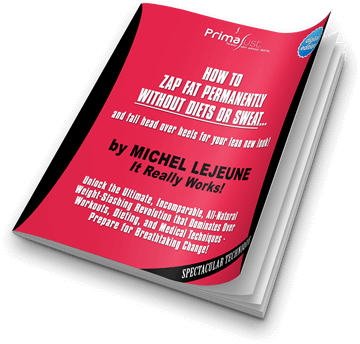Many people think of sugary treats as a guilty pleasure, an indulgence that may not be the best for their waistline, but nonetheless a delicious reward, whether it be a slice of cake, an ice cream cone, or some candy or chocolate. However, as you may already know, sugar addiction is far more than just a harmless treat.
Excessive sugar intake or having a sugar addiction is strongly linked to a long list of medical problems, such as obesity and type 2 diabetes, as well as heart disease and cancer.
But that’s not all – sugar can also have a significant impact on your mental health, causing feelings of irritation, anxiety, sugar intolerance, and extreme exhaustion and burnout.
It’s not just your teeth and gums that suffer from consuming too much sugar. The negative effects of sugar on your overall health and well-being cannot be underestimated.
More, More, More!
Despite the knowledge of the harmful effects of sugar and the rise of the “light” industry, manufacturers continue to add more sugar to everyday products.
 For instance, the amount of sugar in ready-made soups and breakfast cereals has more than doubled over the past few decades.
For instance, the amount of sugar in ready-made soups and breakfast cereals has more than doubled over the past few decades.
In 1978, a bowl of soup contained an average of 2.6 grams of sugar. Nowadays, that same bowl of soup contains a whopping 6.4 grams of sugar – more than double the original amount! But why?
And the same brands differ from country to country. A certain brand of breakfast cereal in the US may contain significantly more sugar than the exact same brand in other countries. The question is, why are manufacturers doing this?
Creating a Need
It seems that manufacturers are creating a need for more sugar in our diets. By adding excessive amounts of sugar to everyday products, they are not only making them more addictive but also increasing our desire for them.
This “sugar trap” can be difficult to escape from, as we become accustomed to the taste of sugar and crave it more and more. It’s no wonder that sugar addiction is on the rise and that it’s becoming increasingly difficult for people to break free from it.
 The manufacturers are essentially training our taste buds to crave more sweetness by gradually increasing the sugar content in our food and drinks. This creates a vicious cycle of addiction that’s difficult to break.
The manufacturers are essentially training our taste buds to crave more sweetness by gradually increasing the sugar content in our food and drinks. This creates a vicious cycle of addiction that’s difficult to break.
It’s time to take control of our diets and make conscious choices about what we eat. By being aware of the hidden sugar in our food, we can reduce our intake and improve our overall health and well-being.
Making a habit of checking the nutrition labels on pre-packaged foods is a wise decision, regardless of whether it’s ready-made meals, breakfast cereals, soups, or any other food item. It’s essential to understand how much sugar we’re consuming and compare it to similar products from different brands.
By checking the nutrition labels, we can make informed decisions about what we’re putting into our bodies and take control of our sugar intake. It may take some effort and time to get used to this habit, but it’s a crucial step in the right direction towards a healthier lifestyle.
So, the next time you’re at the grocery store, take a closer look at the labels and compare the sugar content in different products. You might be surprised at the difference, and it could help you make better choices for your health in the long run.
Sweeteners other than sugar
If you think you’re better off consuming sugar substitutes like aspartame, acesulfame-K, or high-fructose corn syrup (HFCS), don’t celebrate just yet. These substances are indeed widely used and incorporated into various food products. In fact, HFCS is even added to processed meats and deli meats.
While they may contain fewer calories than regular sugar, these sweeteners come with their own set of potential health risks. For example,  has been linked to headaches, dizziness, and even seizures in some individuals. Acesulfame-K, on the other hand, may affect insulin levels and possibly contribute to obesity.
has been linked to headaches, dizziness, and even seizures in some individuals. Acesulfame-K, on the other hand, may affect insulin levels and possibly contribute to obesity.
Therefore, it’s crucial to understand that consuming sugar substitutes may not necessarily be a healthier choice than consuming regular sugar. It’s important to read labels and understand what ingredients are in the food we’re consuming to make informed decisions about our health.
Get rid of that sugar addiction
Great news! You can easily change and enhance your taste buds relatively quickly and easily. For instance, reducing the amount of salt you sprinkle on your food can quickly lead to enjoying meals with less salt.
And once you’ve become accustomed to lower salt intake, you’ll find that previously heavily salted foods taste overly salty and unappetizing. This is because your taste buds have been effectively retrained.
Do you remember hating certain foods as a child, only to find yourself now enjoying them as an adult? It’s often said that we need to “learn to like” or “acquire a taste” for certain foods. That’s exactly what we’re talking about here – the process of changing and developing our taste buds.
So it’s entirely possible to change your taste preferences over time.
Quick results
Our method can help you quickly and easily achieve these taste changes. You can even spontaneously alter your taste preferences, reducing your desire for overly sweet foods. Suddenly, you may notice that excessively sweet things taste disgustingly sugary.
It’s worth considering reducing your sugar intake a bit, which will naturally shift your preferences towards products with lower sugar or sweetener content that are also healthier and better for you. Before you know it, you’ll be free from your sugar addiction.
Are you interested in learning more about how our method can help you overcome your sugar addiction with ease and in a very short time?
If you’re ready to take action, we can help you overcome your sugar addiction quickly and easily.
Just download our free e-book below and discover how easy it can be to ditch this sneaky sugar addiction.
Have any questions or thoughts?











